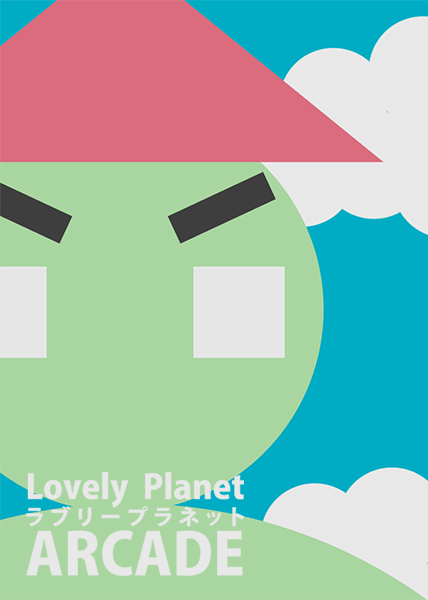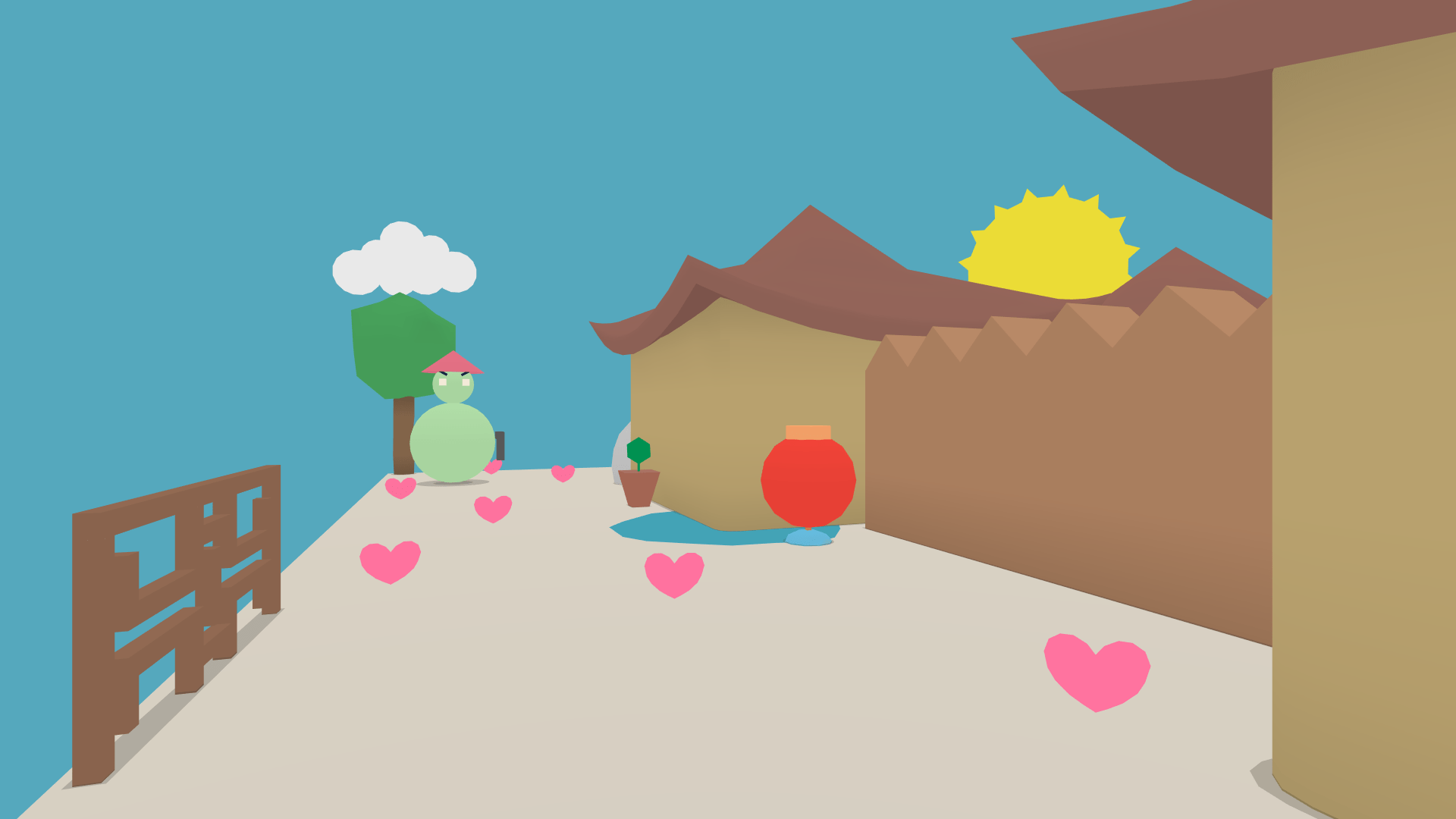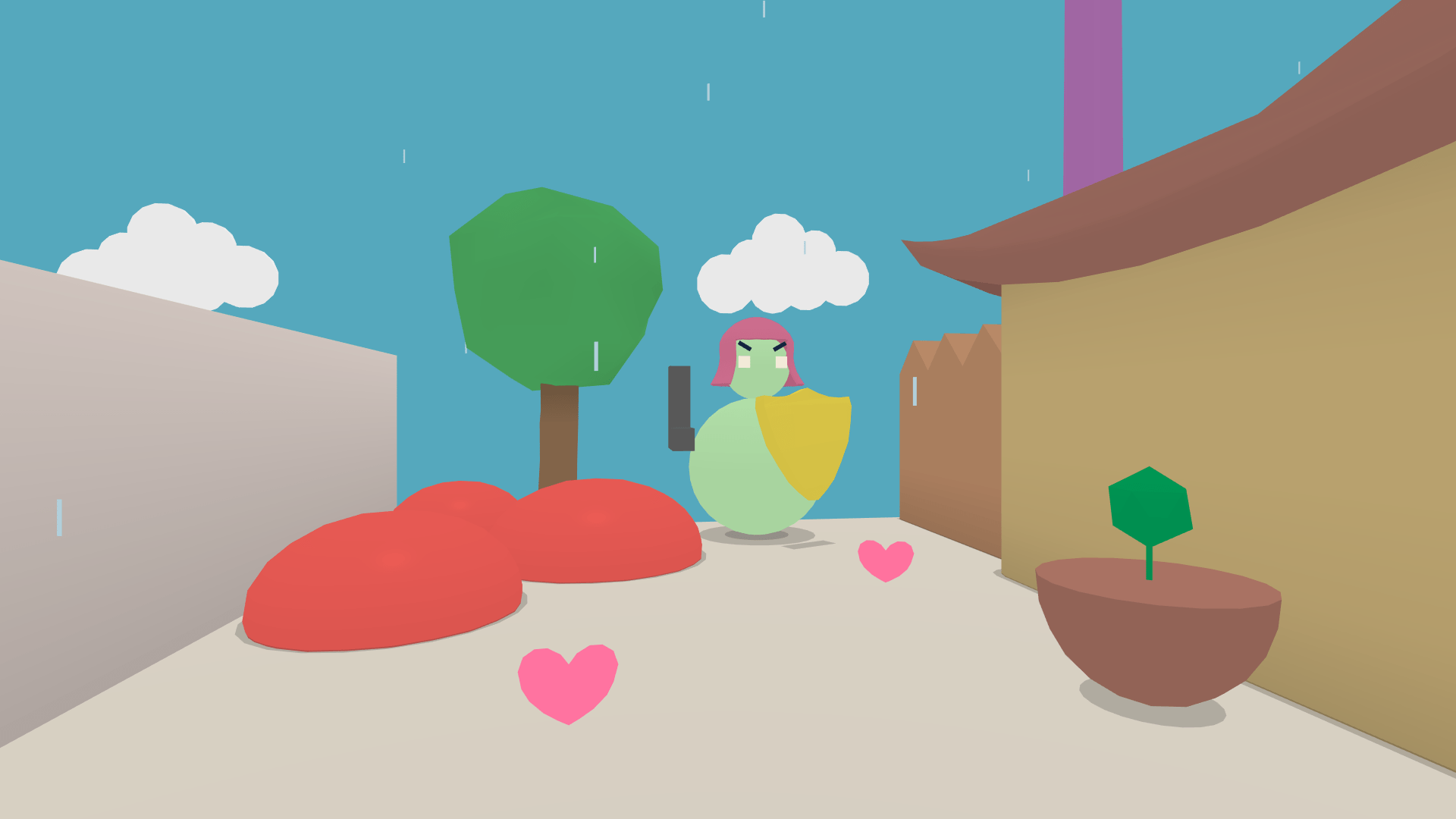
Lovely Planet Arcade – An interesting, but frustrating, sequel to Lovely Planet
***
Reviewed August 24, 2016 on PC
Leave a comment on Giant Bomb
Disclosure: A PC (Steam) download code was provided by the publisher for this review
The first Lovely Planet was a intense twitch shooter wrapped up in a beautiful pastel-coloured abstract world. Lovely Planet Arcade takes that same art-style, but makes a numbers of changes to the gameplay that, on the whole, make for a worse experience. It has some decent ideas, but never feels as cohesive or as fun as the original game.
Lovely Planet clearly took some inspiration from games like Quake and Unreal Tournament. Jumping over terrain, leading slow-moving shots, and whipping the camera around to get the next guy were key parts of the game, as was weaving between bullets in a danmaku-esque fashion. At times, it was like performing a free-form ballet, and there was a great flow to most of the levels. Lovely Planet Arcade makes a number of significant changes that make the game feel closer to Doom: jump height has been significant reduced, there is no vertical aiming, some enemies have hitscan weapons, and the game as a whole is slower. There's something to be said for changing it up - more of the same would have been disappointing - but overall the changes make the game less fun to play.
The first thing I noticed after loading the game is that it just feels slower. The difference was so stark that I ended up booting up the original game to make sure I wasn't misremembering it (I wasn't). After a few levels, the reason became clear - the level and game design in Arcade makes for a much more methodical, paced experience. The twitch gameplay is still there, but it now requires going in with a plan and then executing on it, rather than reacting to things as they happen. The new weapon, a shotgun, takes time to reload, so a misplaced shot can often mean that there is no way to recover. In a lot of ways, it turns Arcade into a puzzle game - the first few runs at a level are dedicated to learning the level and coming up with a solution, then I need to execute on it.
This is where my problems with the game start to show up. The original game felt very free-form, and the path through a level felt like my path. Arcade, on the other hand, feels very restrictive; more often than not, there is one path through the level that works, and the others are doomed to failure. I can't jump over terrain to try and save seconds; I can't aim up to try and take out an enemy early; enemies has insta-kill hitscan weapons, so taking the wrong approach can result in death from an enemy I never even saw; in general, I just had less options at my disposal, and it felt very restrictive. Perhaps the most stark example of this was a level towards the end of Act 3. I spent some time working out a viable path through the level, took out the hitscan enemies and reached the goal, yet still failed the level. Further experimentation revealed that the path I chose resulted in one enemy not spawning. I needed to take a portal in the opposite direction for the enemy to spawn correctly. These sort of restrictions make the game feel more frustrating than fun, a problem I never had with the first game in the series. I'm reduced to finding the designer's path, rather than exploring and finding multiple possible options.
Invisible enemies are not fun
That's not to say the game is without merit, and I'm sure some people will enjoy the challenge it presents. The new enemy types, such as those that briefly freeze time and those that cause the player to teleport to a new area when shot, are interesting and are often used in good ways. The art still looks extremely nice, and the soundtrack, though not as quite as catchy as the original, is excellent. Despite the limitations on movement and the reduced speed of the game, it still has a good flow and it controls well. Even though I didn't particularly enjoy it, Lovely Planet Arcade feels confident in what it is trying to achieve with its new gameplay, and I appreciated that it fully committed to this.
I'm glad that the developer of Lovely Planet Arcade chose to make significant changes for the sequel, but I'm not convinced that these changes were successful. Arcade doesn't scratch the same itches that the first game did, nor does the new gameplay come together in a satisfying way. It's certainly not a bad game, but it lacks the joyous free-form nature of the original game. I'd strongly recommend that newcomers to the series start with Lovely Planet, and only move onto Arcade if searching for a different type of challenge in the same style.

